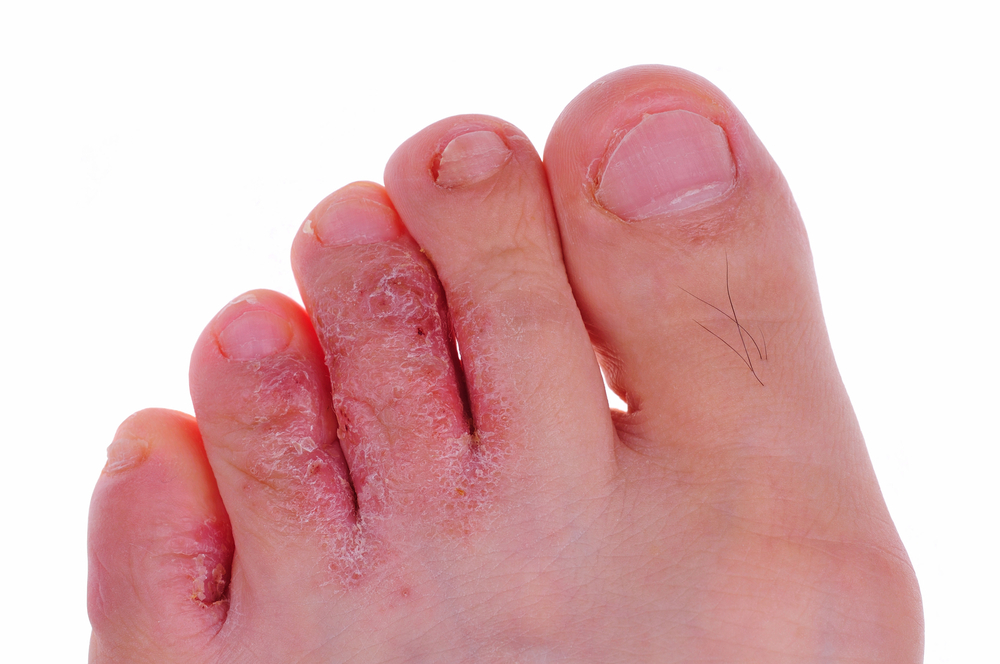Nail Care in Chicago, IL
Evaluating Toenails and assigning a proper diagnosis is critical for proper treatment and care.
Evaluating Toenails and assigning a proper diagnosis is critical for proper treatment and care. Toenail anatomy is interesting because many things can happen to the nail to make it change and cause concern. Although often diagnosed as fungus, a thickened toenail is not always a fungal nail. There are many things that can cause a nail to change color, shape, texture, or growth patterns. A fungal nail may do all of these above things, and ultimately a biopsy is the only sure way to know if the nail is infected.
Nails can change shape, color, texture due to trauma, like running or playing sports in short improperly sized shoes, or getting stepped on or “stubbed.” Some trauma may be slow and steady over a period of time with a slow change to the nail or it can happen abruptly which causes a blood blister under the nail and a purple bruised appearance.
Traumatized nails may grow out clearly, but can become damaged forever, especially if continually injured. Proper evaluation and good prevention strategies will help with the best chances that all nail problems grow out properly.
Dr.'s REMEDY Nail Care
Whether you're dealing with dry cuticles, brittle nails, discoloration or simply need a nail care collection that works with your current nail fungus treatment or toenail fungus treatment, Dr.'s Remedy has an arsenal of podiatrist-formulated products designed to rescue and restore fingers and toes in need of pampering and nourishment. From a cutting-edge cuticle oil to a biotin enriched base coat and a paraben-free gel finish topcoat—just to name a few—our solution-based treatments work together to help protect and maintain perfectly healthy nails while also providing everything needed to create your own custom nail fungus remedy regimen. (Available in our office)

Common Dermatology Conditions
Fungal Infections
Fungus is an organism that is naturally occurring on the skin and around the nails, to a small degree. It is an organism that has specific characteristics under the microscope and sometimes hard to get rid of. Quite often the skin infection called “Athletes Foot” can be present for some time and then the nails become infected. Good proper skin hygiene and awareness is important to get rid of this infection.
The skin may have little pinpoint blisters; sometimes there may be some oozing as well in the more acute version. A Toenail infection may be cracked, brown, white, very thick or very thin. Because there can be such a variety of appearances, a thorough evaluation is imperative. Fungal nail or skin treatments are never guaranteed, as these infections can return even with pharmaceutical or Laser intervention, so prevention strategies are very important.

Treatments for FUNGAL NAIL infections:
Tips for managing or ridding the SKIN of fungal infections:
Other Common Conditions Which Pedicures Can Treat
Blisters & Corns
The Cause: High frequency friction causes blisters and low frequency friction causes a callus or corn.
Blisters: Typically have fluid inside the dome and there may be a blister underneath a longstanding callus, if there is extra irritation or new pressures.
Callus/Corns: These both are really the same thing, skin that is thickened due to unnatural pressure and friction. Anytime friction occurs and the boney prominence rubs against a shoe the skin gets thickened, “Helloma Molle” (soft corn) occurs between toes at the joints (knuckles).
Treatment & Prevention :
Athletes Foot / Fungal Nails
The Cause: Both are a fungal infection of either the skin and/or the nails. Typically the skin is infected first, then often, the nails get involved. The skin may have pinpoint red dots and blisters and “look” like dry skin. The nails may be thickened and yellow/brown.
“NOT” every thick nail is fungal “ESPECIALLY” in dancers and athletes.
Treatment & Prevention :
Plantar's Warts
The Cause: A wart is a virus which shows up as a small round spot with a hard callus over it. It will have no skin lines within it and may have small black dots inside it as well. It may be painful to squeeze it side to side or directly. Plantar Warts can look similar to corns so it is best to have a doctor take a look.
Treatment & Prevention :
Ingrown Toenails
The Cause: Some nail shapes are prone to growing inwards because of the natural shape of their nail (too wide or too curled under). Dancers are prone due to tightness of ballet and pointe shoes and many of the foot positions.
Treatment & Prevention :
She always keeps in mind the movements of each sport and incorporates that into the treatment plan.
"Spent a ton of time with us. She was wonderful. Would highly recommend."
- A.J.

